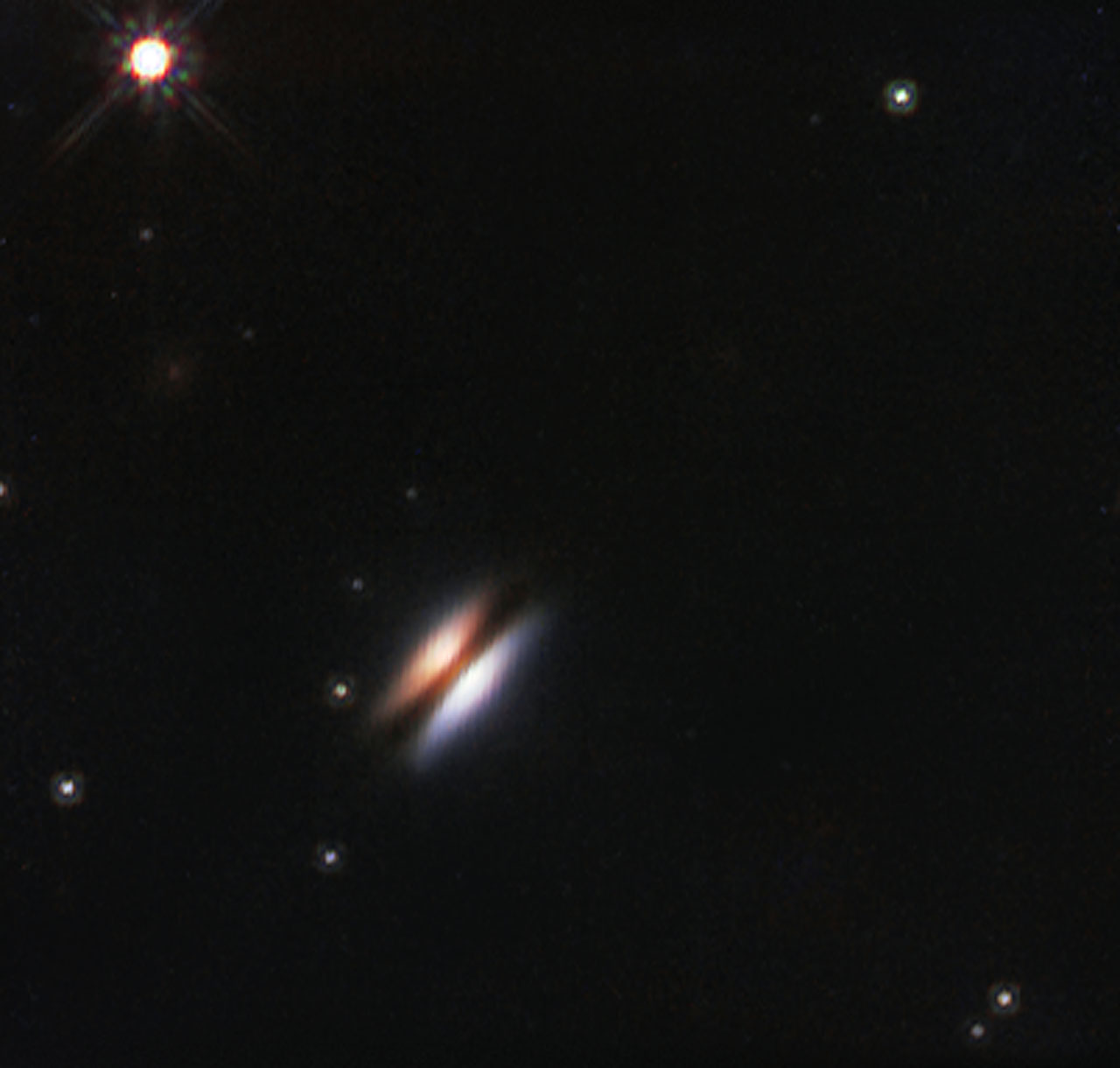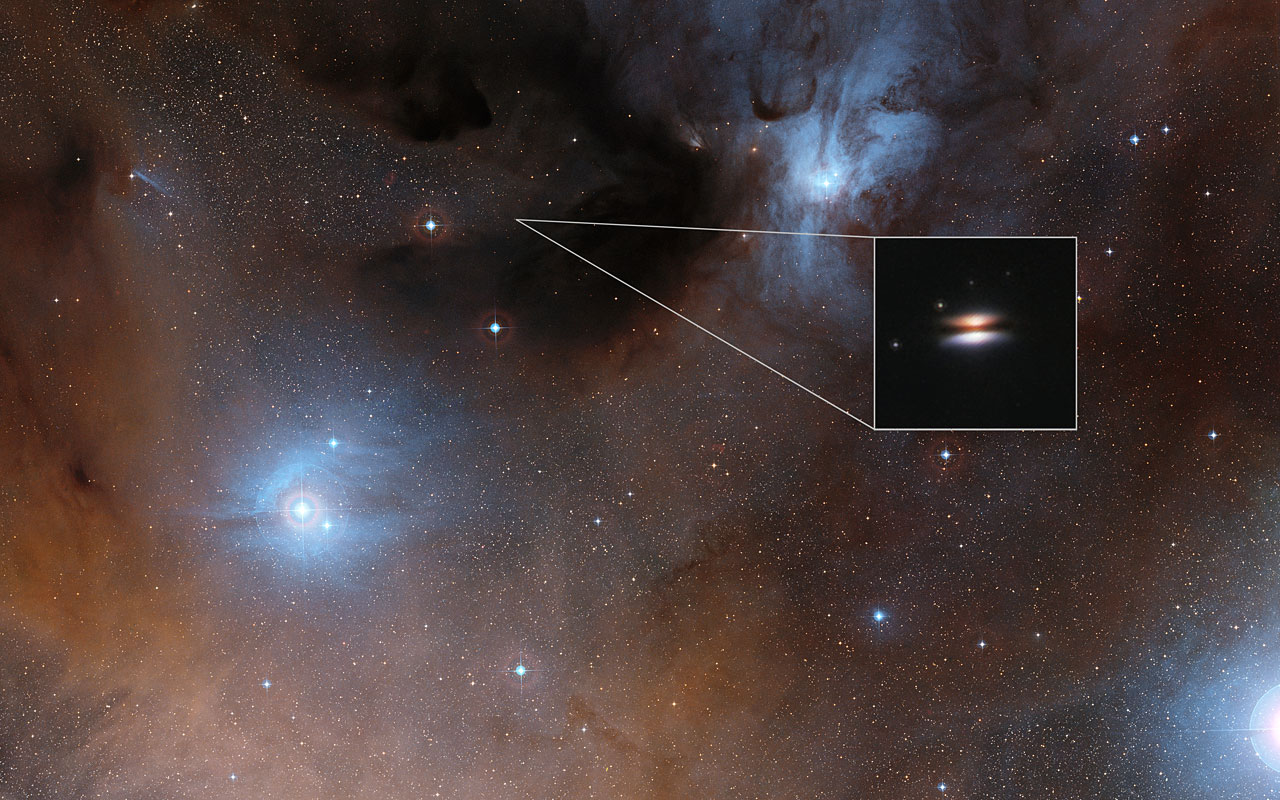Planet-Building 'Flying Saucer' Disk Is Surprisingly Cool (Video)
Everyone knows that UFOs are cool, but the surprisingly low temperatures of one cosmic flying saucer may force astronomers to rethink their ideas about how planets form.
Scientists have made the first direct measurements of large dust grains in the planet-forming region of a disk dubbed the Flying Saucer, which surrounds a young star in the star-formation region Rho Ophiuchi, about 400 light-years from Earth. The researchers created a video to zoom in on the cosmic Flying Saucer to highlight their study.
"The disk is not observed against a black and empty night sky. Instead, it's seen in silhouette in front of the glow of the Rho Ophiuchi Nebula," study lead author Stéphane Guilloteau, of France's Laboratoire d’Astrophysique de Bordeaux, said in a statement. "The resulting negative signal means that parts of the disk are colder than the background." [Planet Being Assembled As Astronomers Watch (Video)]
uto study The Flying Saucer scientists theAtacama Large Millimeter/submillimeter Array (ALMA) in Chile (which is called 2MASS J16281370-2431391), and then compared these measurements to observations of the background glow obtained by the IRAM 100-foot (30 meters) telescope in Spain.
The team found that temperatures in the disk were as low as minus 447 degrees Fahrenheit (minus 266 degrees Celsius), only a few degrees above absolute zero. Models of planet formation suggest that the disk should be between minus 432 and minus 423 F (minus 258 to minus 253 C).
The surprisingly low temperatures suggest that scientists might need to take another look at how planets form within the disks surrounding newborn stars, researchers said.
"To work out the impact of this discovery on disk structure, we have to find out what plausible dust properties can result in such low temperatures," co-author Emmanuel di Folco, also of Laboratoire d’Astrophysique, said in the same statement.
Breaking space news, the latest updates on rocket launches, skywatching events and more!
"We have a few ideas — for example, the temperature may depend on grain size, with the bigger grains cooler than the smaller ones," di Folco added. "But it is too early to be sure."
If such low temperatures are commonly found within other proto planetary disks, there could be intriguing implications for how worlds form around stars. Different dust properties could affect how particles come together to build planets, and could even result in giant planets forming closer to their parent stars than current models allow, study team members said.
Planetary disks form at various angles with respect to the sun. However, the disk studied by the astronomers appears edge-on from Earth, resulting in its nickname, the Flying Saucer.
"The Earth is quite literally in the shadow of the Flying Saucer!" Guilloteau said.
Follow Nola Taylor Redd on Twitter @NolaTRedd or Google+. Follow us at @Spacedotcom, Facebook or Google+. Originally published on Space.com.

Nola Taylor Tillman is a contributing writer for Space.com. She loves all things space and astronomy-related, and always wants to learn more. She has a Bachelor's degree in English and Astrophysics from Agnes Scott College and served as an intern at Sky & Telescope magazine. She loves to speak to groups on astronomy-related subjects. She lives with her husband in Atlanta, Georgia. Follow her on Bluesky at @astrowriter.social.bluesky


